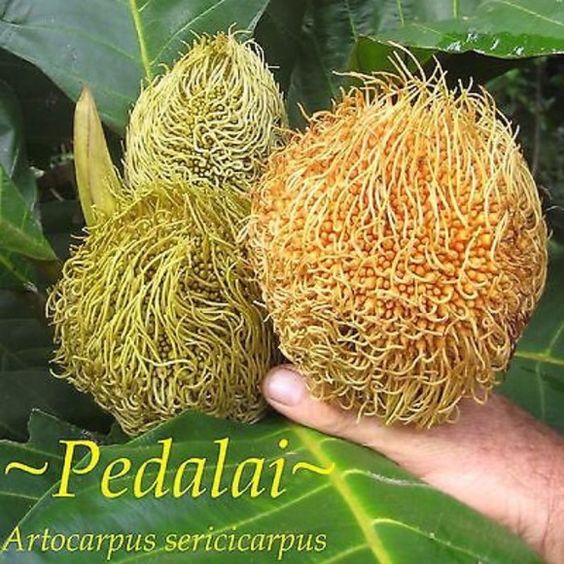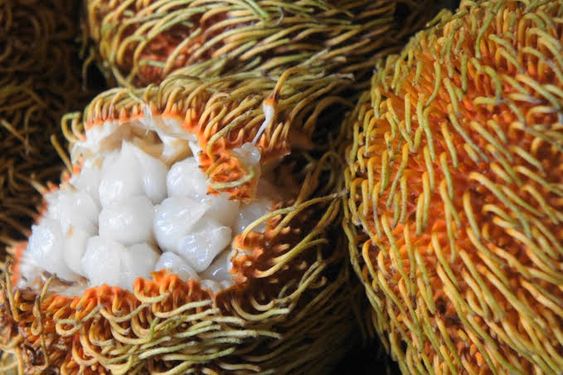Nature has a way of surprising us, and the fruit world is no exception. One of its most fascinating creations is the white thorny fruit. It has a similar shape to the jackfruit we know, but it’s shrouded in mystery. With its intriguing combination of appearance and taste, this enigmatic fruit showcases the diversity and wonders of the plant kingdom.

The Unconventional Appearance: The white thorny fruit is quite a sight to behold, with a size and shape resembling that of the jackfruit. However, what sets it apart is its pale, creamy white color. Its surface is covered in thorny projections, giving it a unique texture that is both prickly and intriguing.
Flavorful Exploration: The taste of the white thorny fruit is a pleasant surprise. It boasts a subtle yet enticing flavor that combines elements of sweetness with a mild tanginess. The juicy and tender flesh provides a stark contrast to its thorny exterior, creating a mouthwatering experience that is reminiscent of other familiar tropical fruits.

Cultural Significance and Culinary Uses: While relatively rare, the white thorny fruit holds cultural significance in certain regions where it grows. Local communities often incorporate this fruit into traditional cuisines, utilizing its unique taste and texture to create distinctive dishes. From jams and preserves to desserts and beverages, the versatility of the white thorny fruit shines through in its culinary applications.

Botanical Curiosities: the botanical origin of The white thorny fruit adds to its allure. It belongs to the same family as the jackfruit and the breadfruit, showcasing the intricate web of relationships within the plant kingdom. the thorny exterior serves as a natural defense mechanism, deterring potential predators while allowing the fruit to mature and develop its flavor.





